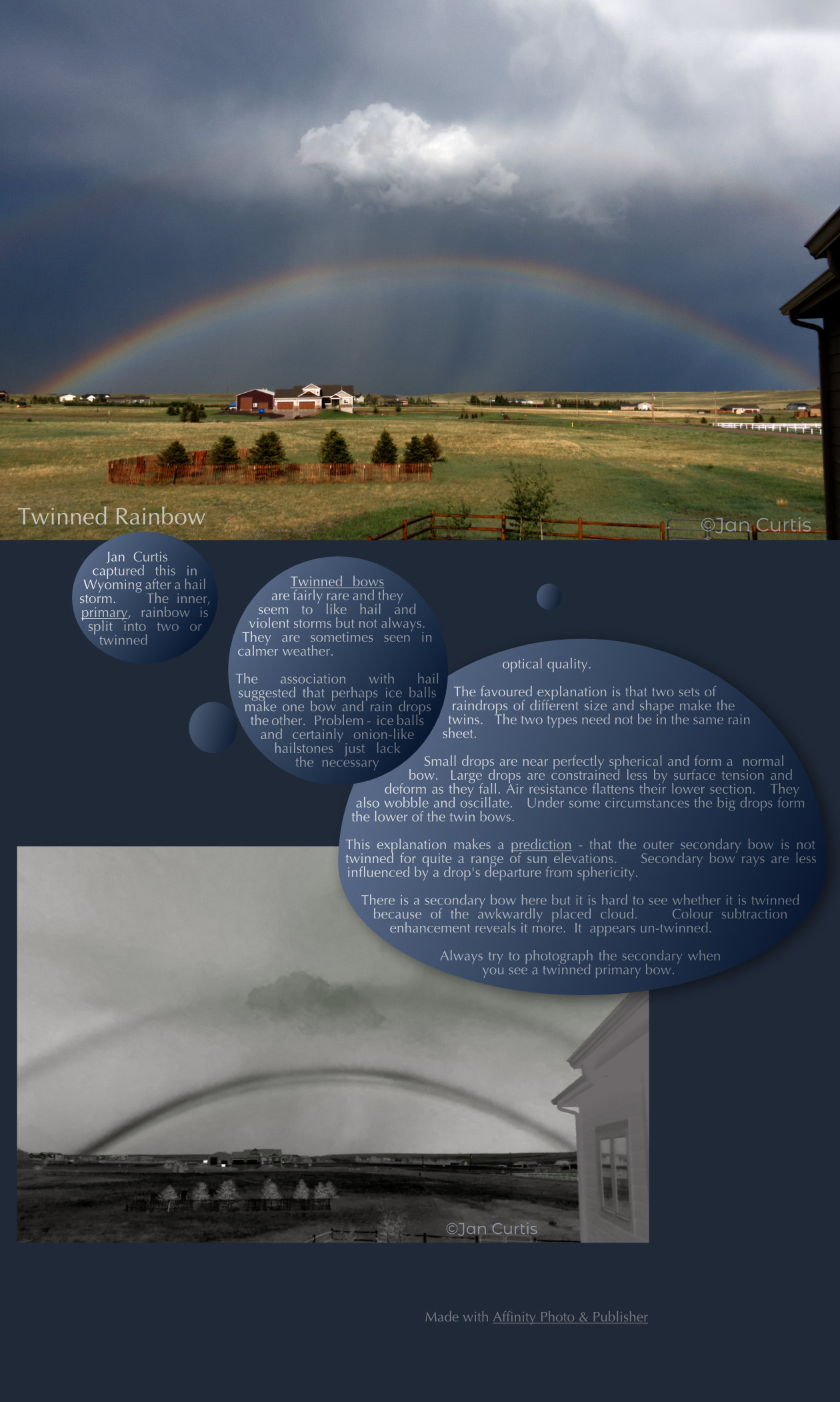Turner's Bows
Twinned rainbow
Jan Curtis captures this in XXX after a hail and rainstorm. The inner, primary, rainbow is split into two - twinned
Twinned bows are fairly rare and they seem to like hail and violent storms but not always. They are sometimes seen in calmer weather.
The association with hail suggested that perhaps ice balls made one bow and rain drops the other. Problem, ice balls and certainly not onion-like hailstones are not of just too poor an optical quality.
The favoured explanation is that two groups of differently shaped raindrops make the twins. Small drops are near perfectly spherical and form �normal� bows. Large drops are constrained less by surface tension and deform as they fall. Air resistance flattens their lower section. They also wobble and oscillate. Under some circumstances the big drops form the lower of the two bows.
This explanation makes a prediction - that the outer secondary bow is not twinned for quite a range of sun elevations. Secondary bow rays are less influenced by a drop's departure from sphericity.
There is a secondary bow here but it is hard to see whether it is twinned because of the awkwardly placed cloud. Colour subtraction enhancement reveals it more. It �appears� un-twinned.
Always try to photograph the secondary when you see a twinned primary bow.


toptics
A
Highlights


